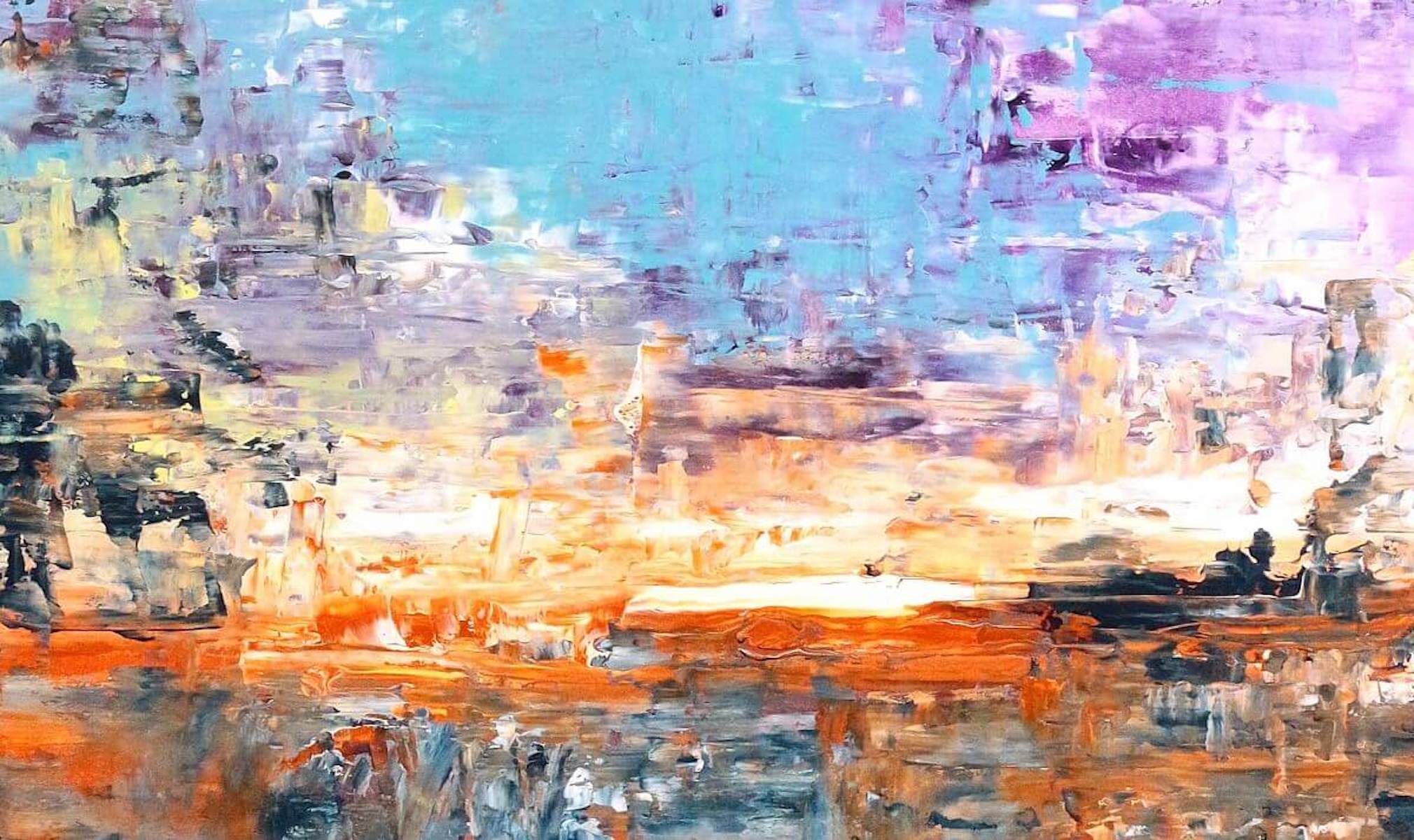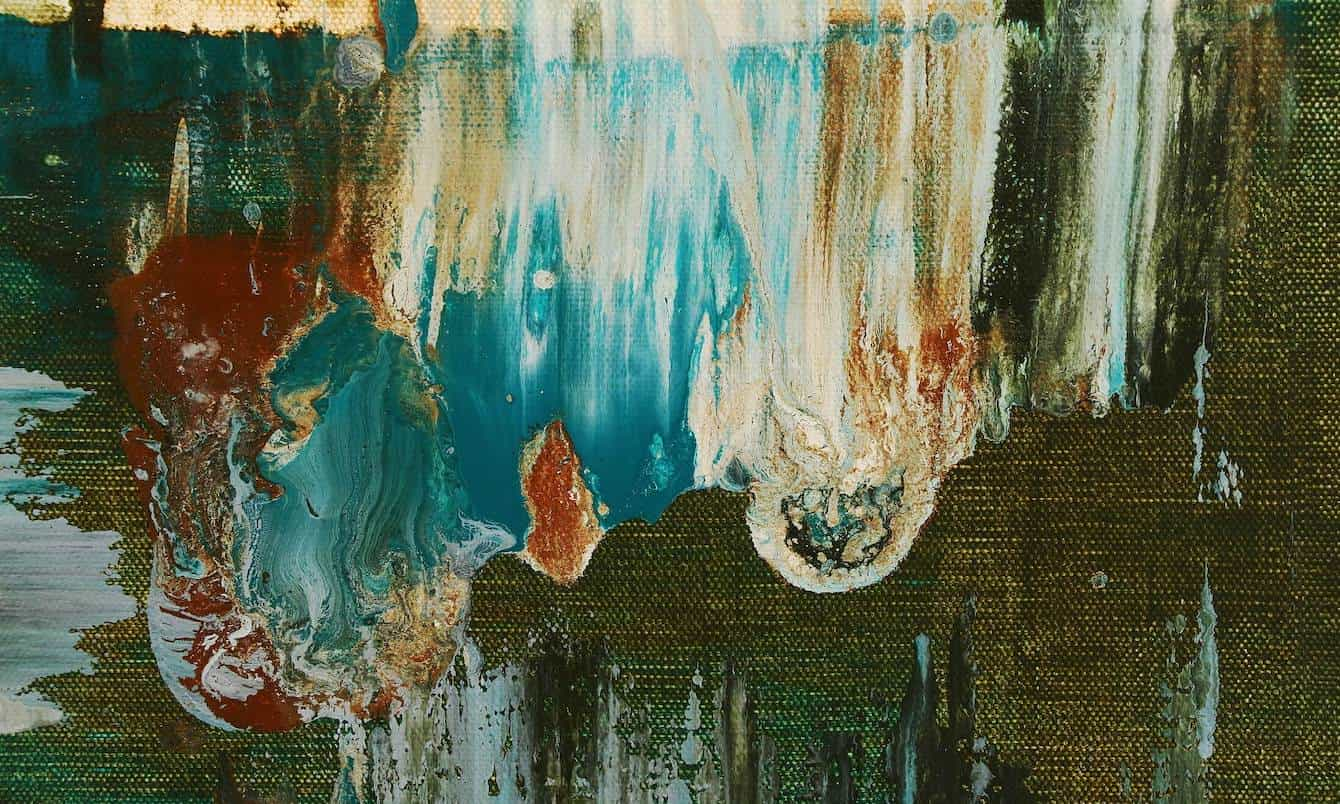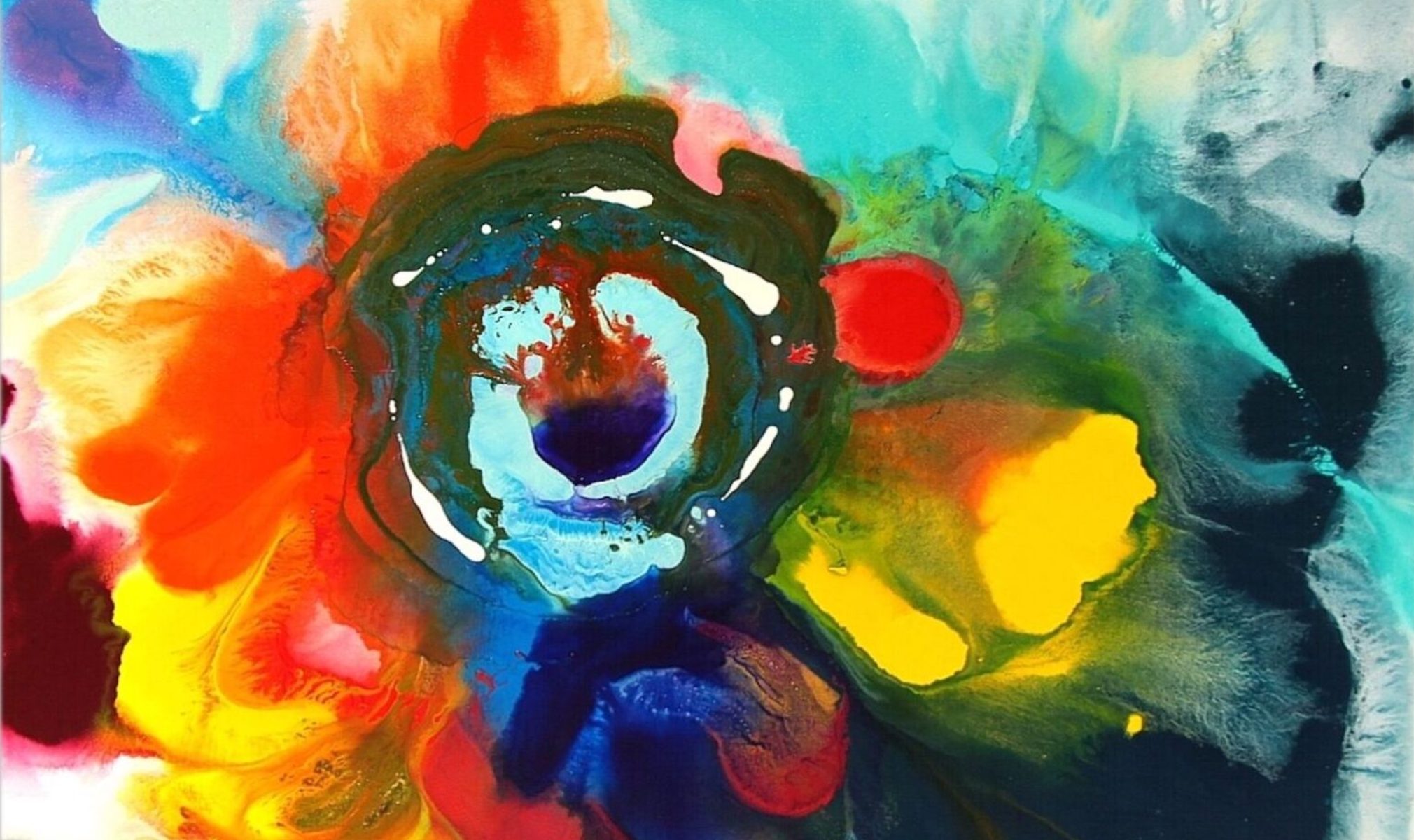A Topography of Perception
Iven Orx & Aaron Vinn, ETHEREAL AXIS, CORE series, 2023, paint on canvas, 57,1 x 86,6 x 1,2 in (145 x 220 x 3 cm)
In the work cycle of Iven Orx & Aaron Vinn, a continuous movement unfolds through perceptible forms and inner substance – an exploration of the spaces where matter and consciousness merge in a fluid dialogue. The series SEAM, VEIL, CORE, LIMEN, and PROJECT 05 are not merely consecutive phases but interconnected threshold states, making sustained thought visible through images, layers, and energies.
„Our works are fields of transformation – threshold spaces where inner and outer realities meet and intertwine.”
Iven Orx & Aaron Vinn
SEAM marks the first rupture – a breaking of the surface where form and dissolution enter into dialogue. VEIL drapes a translucent layer over this opening, creating a finely structured weave of light and color. CORE condenses the experience into an energetic center, where matter and presence circulate in vibrant tension. LIMEN represents the transition, where the inner is projected outward and the threshold itself becomes tangible.
PROJECT 05 finally opens a reflective space: earlier phases reappear transformed as layers of an open system, including figurative and narrative elements. Here, the dynamic interplay between memory, material, and perception becomes perceptible. The series does not form a linear sequence but an organic movement, revealing the complex relationship between world, matter, and consciousness.
Together, Orx & Vinn’s works demonstrate the close interconnection of form, energy, and perception – a body of work in which matter and consciousness are simultaneously made tangible.
Work Groups
Current news on exhibitions, works, and events
Receive news
We are happy to keep you informed: subscribe to our newsletter for information on exhibitions, works, artist events, and more.





